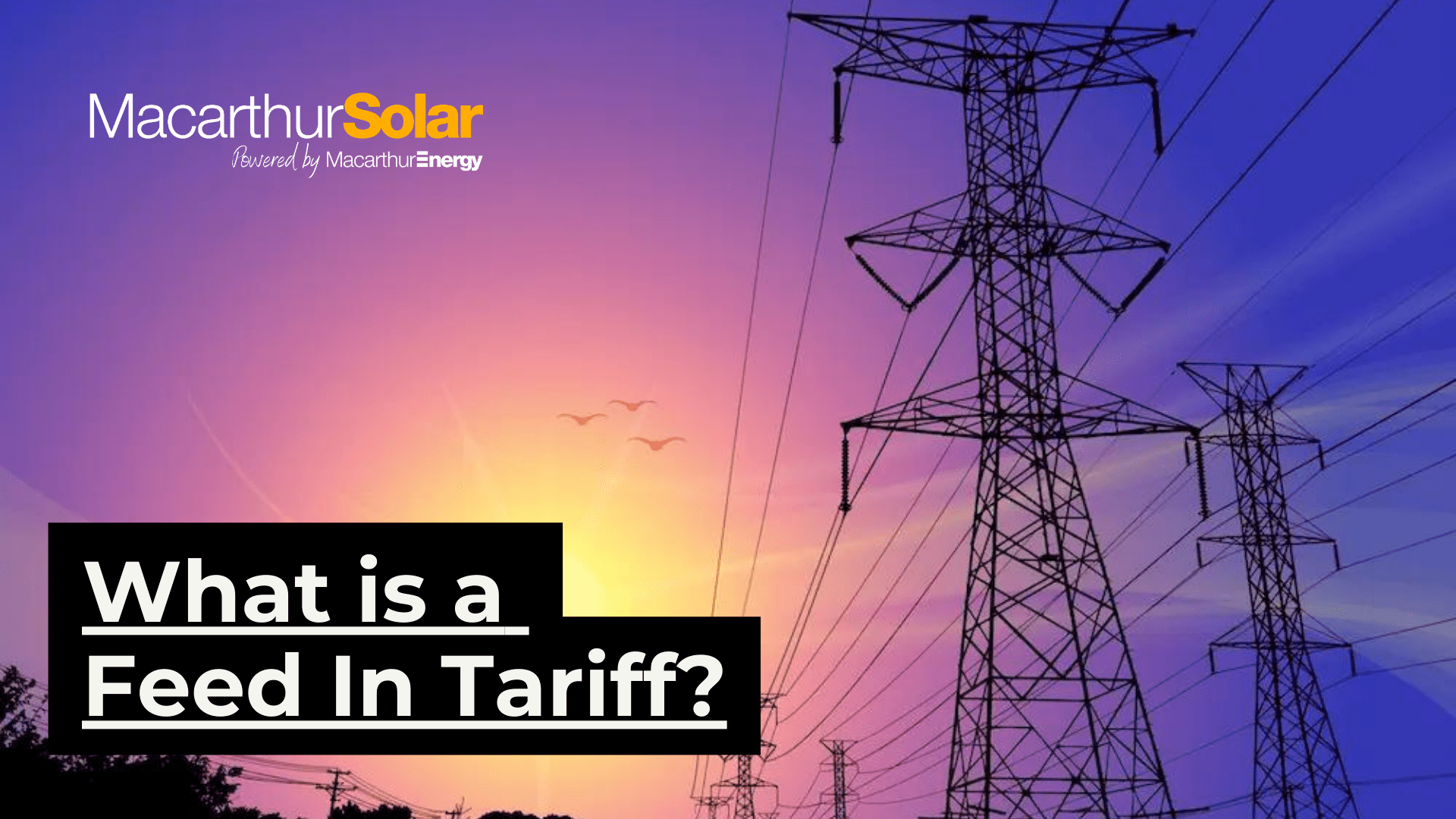As the solar energy revolution continues to grow, one term you’re likely to come across is “feed-in tariff”. But what exactly is a feed-in tariff, and how does it impact your investment in solar power? At Macarthur Solar, we believe it’s important for our customers to understand this key concept to maximise their savings and make informed energy decisions.
A
feed-in tariff (FiT) is a payment you receive from your electricity retailer for the excess solar energy your system generates and exports to the grid. When your solar panels produce more electricity than your home uses, the surplus energy gets fed back into the electricity grid, and your provider compensates you for it.
The rate paid for this energy is known as the feed-in tariff, typically measured in cents per kilowatt-hour (kWh). It’s essentially a way to earn money or reduce your energy bills by selling the extra energy your solar system produces.
Once your solar system is installed, it will start generating electricity as soon as there’s sunlight. During the day, when your panels produce more energy than your household consumes, the excess is sent back into the grid. Your electricity retailer tracks the amount of energy you export and credits your account based on the agreed feed-in tariff rate.
The more energy your system exports, the more savings or earnings you can accumulate on your bill.
Feed-in tariffs play a crucial role in making solar energy more attractive for homeowners. Here’s why:
1.
Lower Energy Bills: By exporting excess solar power, you can offset your electricity consumption, effectively reducing your energy bills.
2.
Return on Investment (ROI): Feed-in tariffs provide a way for solar system owners to recoup some of their investment. The higher the FiT rate, the quicker you can earn back your initial solar installation costs.
3.
Energy Independence: While feed-in tariffs offer financial benefits, they also contribute to reducing the demand for grid energy, helping you achieve greater energy independence and sustainability.
•
Location: Different states and territories may have different FiT policies and rates. In Australia, feed-in tariffs are generally higher in regions with more sunshine, like New South Wales and Queensland.
•
Energy Provider: Retailers set their own feed-in tariff rates, so it’s important to compare providers to ensure you’re getting the best deal for your exported energy.
•
System Size: The size of your solar panel system can impact how much energy you export and, consequently, the total savings from your feed-in tariff.
•
Usage Rates: High feed-in tariffs often come with higher energy usage rates. Compare both to ensure you’re getting a balanced deal.
•
Contract Terms: Some retailers offer attractive FiTs but may have long contract lock-ins or restrictive terms. Always review the contract before signing.
•
Additional Benefits: Look for other features like green energy options, discounts, or rebates when choosing a provider.
At Macarthur Solar, we help our customers navigate the complexities of feed-in tariffs and find the best solar solutions for their needs.
To make the most out of your feed-in tariff, consider these strategies:
1.
Optimise Your Solar Usage: Use more of your solar power during the day when your system is generating energy. This reduces your reliance on grid power and maximises savings.
2.
Invest in Solar Battery Storage: A solar battery can help store excess energy produced during the day for use at night. This reduces the amount of electricity you buy from the grid, increasing your self-sufficiency and lowering your bills.
3.
Regular Maintenance: Keeping your solar system in top condition ensures it operates efficiently, allowing you to generate more energy and maximise your feed-in tariff returns.
If you have a solar system or are considering installing one, a feed-in tariff is an excellent way to earn extra money or reduce your bills. However, the financial benefits depend on several factors, including your energy consumption, the size of your solar system, and the tariff rate offered by your retailer.
At Macarthur Solar, we guide our clients through the process, ensuring they maximise both their solar energy usage and feed-in tariff benefits. Contact us today to learn more about how you can take advantage of feed-in tariffs and start saving.
A feed-in tariff is an essential part of the solar equation, providing a way for homeowners to profit from their excess solar power. By understanding how it works and what factors impact the rates, you can make informed decisions that increase your savings and help you get the most out of your solar investment.
At Macarthur Solar, we’re committed to helping you harness the full potential of solar energy, including making the most of feed-in tariffs.
